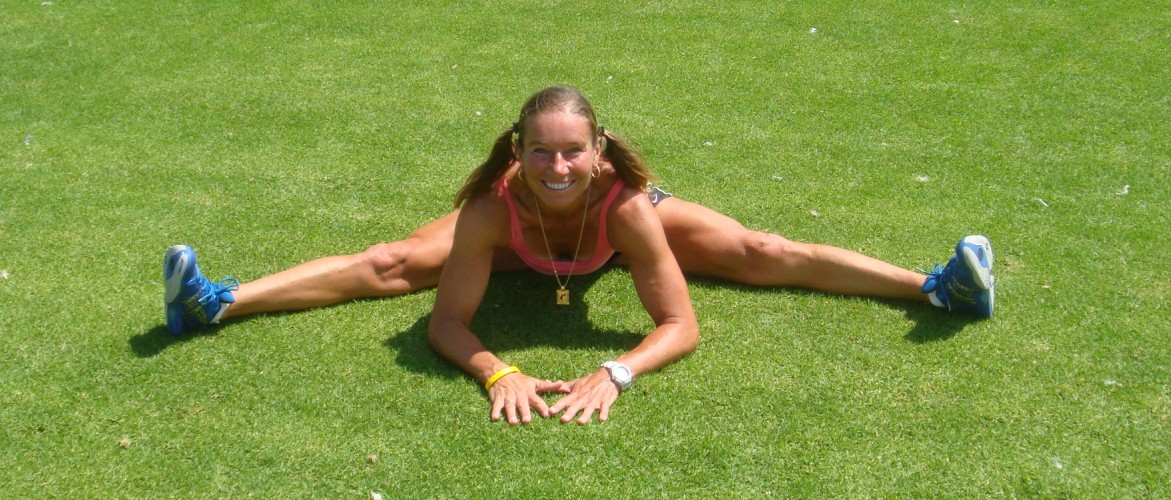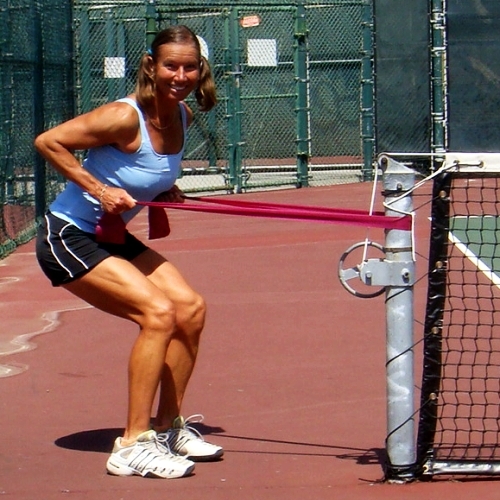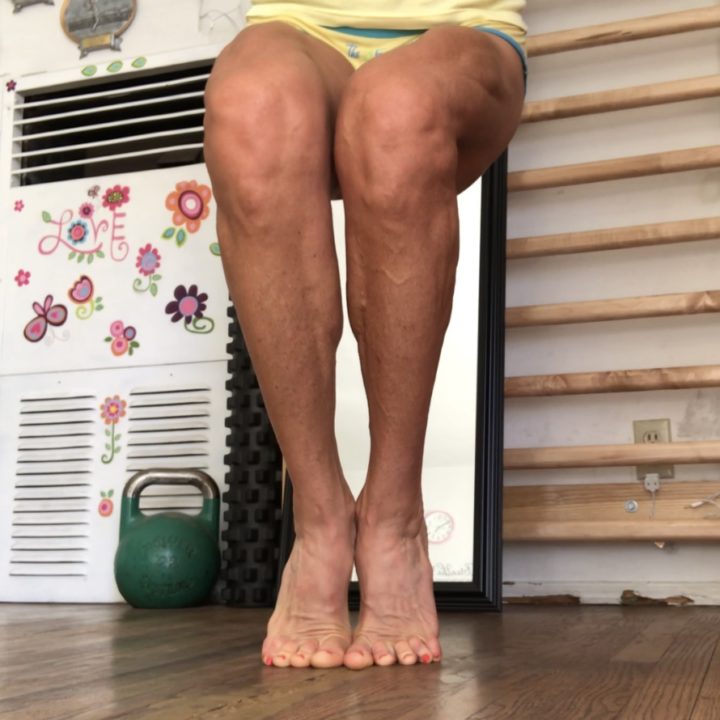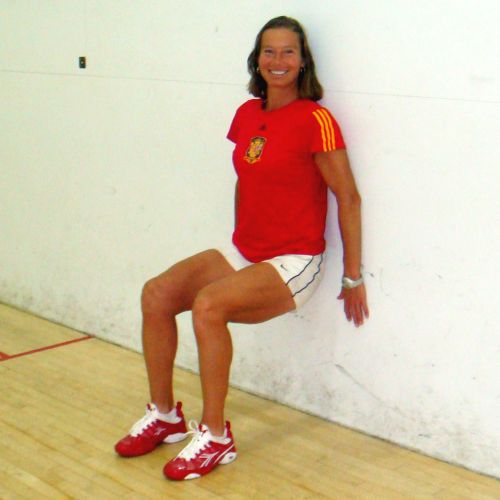If you are an athlete, you run a risk of injury. All sports have a risk of injury. The more contact in sport, the greater the risk is. Luckily, in tennis, there is not as much contact, other than when you play doubles and accidentally crash into your doubles partner.
Ops.
However, the majority of injuries is from overuse.
Most frequent sport injuries are injuries to ligaments (sprains), injuries to muscles (strains), and injuries to bones (stress fractures and fractures). These injuries are caused when abnormal physical stress is put on tendons, joints, muscles and bones.
The contact injuries are often hard to predict and prevent. But all the overuse injuries are preventable with a proper physical training and smart injury prevention system.
General Tips for Injury Prevention
- strengthen the muscles and tendons
- adopt a proper flexibility program (stretching and myofascial release)
- adopt good recovery habits
- eat nourishing foods with the majority of fruits and vegetables
- use proper technique
- wear the right gear
- play safe, don’t do risky things, like diving after a ball on the concrete, or playing with many lose tennis balls on the court
- drink a lots of fluids and have wise heat strategies in place
Some interesting facts:
- back pain is the second leading cause of visiting a doctor
- one in seven Americans has a musculoskeletal injury or condition
- sprains, dislocations and fractures account for one half of the musculoskeletal injuries
- one in ten physically active adults suffer a sport related injury
- about 55% of the sport injuries are to the knee, 20% to the shoulder and 7% to the elbow
Overuse Injuries
The majority of overuse injuries are preventable, when you adopt a proactive “prehab” training. Prehab (or prehabilitation) is a training program that is sport or lifestyle specific and helps to prevent injuries.
The more advanced or more intense athlete you are, the greater the need for an injury prevention training you have. The more advanced you are, the more your body adapts to the demands of training and may start compensating or developing faulty movements.
The more repetitive your sport is, which tennis definitely is, the harder it is for your body to keep up with the imposed demands and compensations. Weaknesses and problems will happen.
At whatever level of athleticism you are, if you develop great proactive techniques to prevent future problems, you can enjoy your athletic activity at high performance level and also injury-free.
Proactive Injury Prevention
You main goal is to keep your body balanced and even in strength, flexibility, and range of motion,in all planes. With other words, check yourself and your posture regularly and look for this one thing:
All the major joints—shoulders, hips, knees and ankles—should be aligned above each other in all planes.
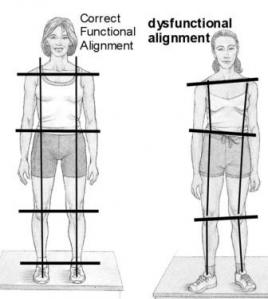
When you look from the side, your knees should be above ankles, your hips directly above the knees, and your shoulders above the hips. All in one nice line.
When you look from the front (or back), standing with your feet hip apart, your knees should be above the ankles, hips above the knees, and shoulders above the hips.
Looking from the front, the knees should be in a nice horizontal line, and so should be the hips and shoulders. These there lines should be parallel.
When you have this perfect alignment, you may be almost sure that you won’t have any future problems of overuse injuries.
Only very few athletes, and especially tennis players are this beautifully balanced. You will notice that your right shoulder is higher up than the left one. It may be also turned forward when you look from the side.
When one of your shoulders is higher up, then the hips have to compensate to create a better balance and the left hip is going to be higher than the right one. Looking from the side, one or both hip may be shifted forward or back.
Similar goes with your knees. When the hips are not balanced, then the knees have to compensate for the faulty movement and the knees will be out of balance too.
And this continue whole way down in the chain to your feet. When all the above doesn’t work correctly, your feet will compensate when transferring the forces from the ground when you run and walk. The delicate structures of your feet get overused with faulty movement in not too long and you get overuse injuries.
Check your posture regularly.
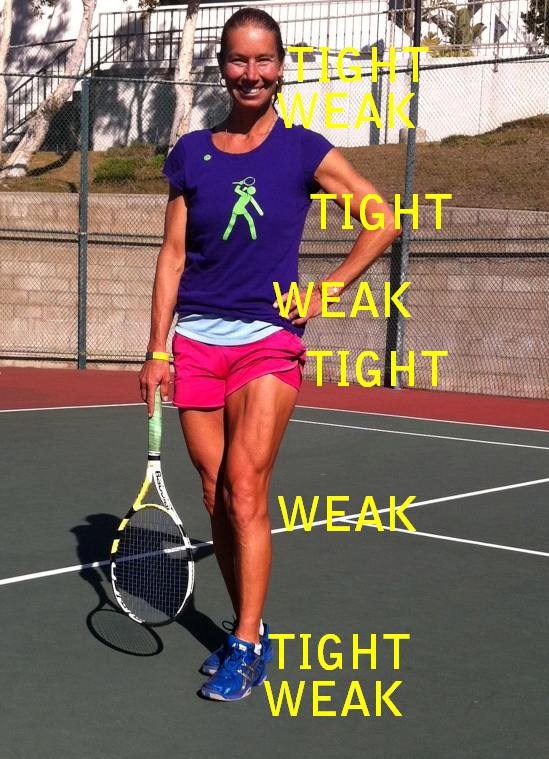
If you see the tendency of a dysfunctional alignment, start immediately with some extra strengthening of the weak parts, stretching and myofascial release of the tight and shortened parts. Do this regularly and as much as possible until you even out the imbalances.
Only then you can ease up a little bit, but make sure to check your posture often. Your body is a fine-tuned dynamic system, that adjusts on a continuous basis. When one little musculoskeletal part goes out of balance—and this could be thanks to even something innocent like sitting too long in a movie theater or car—the snowball effect sets in action. You could get more serious problems sooner than you can imagine.
Don’t let it happen. Proactively do your prehabilitation regimen and keep the injuries away. You will also notice that perfectly aligned body is more functional in its movement and your performance will improve quite dramatically. With good alignment, there is a great chance that you will feel much better as well.
.

